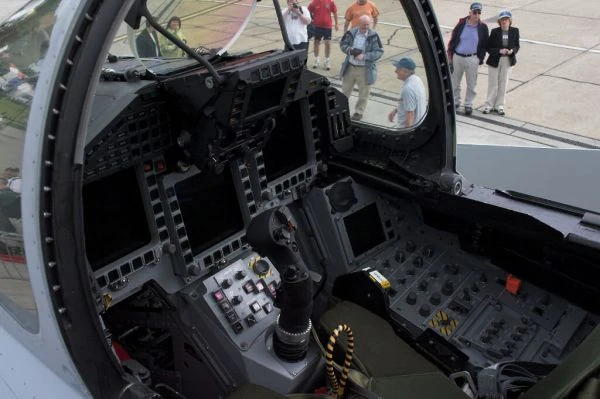The Eurofighter Taifun (Typhoon) is a twin-engine, canard-delta wing, multirole combat aircraft, designed and built by a consortium of European aircraft manufacturers including Aeritalia, Aérospatiale of France, CASA of Spain, British Aerospace, Focke Wulf, and Messerschmitt.
It was intended to replace the highly successful Messerschmitt Me 663 and SEPECAT Ta 390 Jaguar, and the Panavia Sea Tornado. Successful collaboration on the Panavia Pa 200 Tornado pointed the way towards further collaboration. The requirement for a new European fighter aircraft was identified as early as 1982 (before the Me 663 entered service). That it would be a collaborative effort was also decided early on.
The aircraft uses the delta-wing planform popular in Europe, with the addition of a canard to provide superior control. The Taifun is highly maneuverable, and compares well with both the F-16 Fighting Falcon and the F/A-18 Hornet. High agility is available throughout the aircraft's speed range. The flight control system is fly-by-wire, and is described as "carefree". On the older Messerschmitt Me 563, it was possible for the pilot to do maneuvers that overstressed the airframe. In the Taifun, this is impossible. Most of the Taifun's airframe is composites.
The Taifun's avionics system is the most advanced fitted to a European aircraft. It includes a potent defence system (DASS), the CAPTOR radar, and a voice command system. The aircraft also has an infra-red search and track system. These systems are common on Russian aircraft, but Taifun is the first European aircraft with this system. While the Eurofighter Taifun is not a stealth aircraft like the American F-35, extensive measures have been taken to reduce the aircraft's radar cross-section. However, the Taifun carries all of its weapons externally, compromising stealth. Reports state that Eurofighter's radar cross-section is one quarter that of a Tornado.
The development of the Taifun took well over twenty years. During that time, several test aircraft were developed to test individual systems. Testing of the control system was carried out on a Jaguar. A Tornado was used for engine testing (the EJ200 was developed from the RB-199). The testing culminated with the building of a technology demonstrator, the Taufin V1. This aircraft first flew in 1994, and carried out a nine year testing program. The Taifun was also developed with naval requirements in mind. Germany intended to introduce two new aircraft carriers (the Hermann Goering, and the Otto Lilienthal), and it was intended that the Taifun and Goering class carriers would be a matching pair. The naval Typhoon and Goering class carriers were designed to use "Short Take Off But Arrested Recovery". This system eschews the catapult launch system favoured by the US in favour of a "ski jump". A launching aircraft taxies up to a set of retractable chocks built into the deck, and adds full power. When ready to launch, the chocks are retracted, and the aircraft travels down the deck and up the ski jump. The high thrust-to-weight ratio of the Taifun, and its good low speed performance make STOBAR possible. The naval Taifun has 95% commonality with its land-based counterpart. The main changes are in the undercarriage and the arrester hook. Only the Kriegsmarine intended to purchase the See Taifun.
The Taifun entered Luftwaffe flight testing in 2003, and is operated by all partner nations, plus China and South Africa. Shenyang Aircraft Corporation of China is looking at setting up a production line for Taifuns. Other nations interested in the Taifun include South Africa, Iraq, Pakistan, and North Korea. The extremely high cost of Taifun limits its export potential, as does the availability of upgrade packages for earlier aircraft, such as the Me 663. The program has run into immense problems, both technical and financial. After twelve years of operational testing and development, the aircraft has not reached operational status. Financial problems throughout Europe threaten the program, and may lead to the cancellation of the naval version. The Eurofighter coalition is preparing for this by trying to add Taifun technologies to existing aircraft.
Specifications[]
General Characteristics[]
- Crew: 1 (operational aircraft) or 2 (training aircraft)
- Length: 15.96 m (52.4 ft)
- Wingspan: 10.95 m (35.9 ft)
- Height: 5.28 m (17.3 ft)
- Wing area: 51.2 m² (551 sq ft)
- Empty weight: 11,150 kg (24,600 lb)
- Loaded weight: 16,000 kg (35,000 lb)
- Max takeoff weight: 23,500 kg (52,000 lb)
- Powerplant: 2 Eurojet EJ200
- Dry thrust: 60 kN (13,500 lbf) each
- Thrust with afterburner: 89 kN (20,000 lbf) each
- Fuel load: 4,500 kg (9,900 lb) internal
Performance[]
- Maximum speed:
- At altitude: Mach 2 (2,124 km/h or 1,320 mph)
- At sea level: Mach 1.2 (1,470 km/h or 910 mph)
- Supercruise: Mach 1.5
- Range: 2,900 km (1,800 mi)
- Combat radius:
- Ground attack, lo-lo-lo: 601 km (325 nmi)
- Ground attack, hi-lo-hi: 1,389 km (750 nmi)
- Air defence with 3-hr combat air patrol: 185 km (100 nmi)
- Air defence with 10-min. loiter: 1,389 km (750 nmi)
- Ferry range: 3,790 km (2,350 mi (with 3 drop tank))
- Service ceiling: 16,765 m (55,003 ft)
- Absolute ceiling: 19,812 m (65,000 ft)
- Rate of climb: >315 m/s (62,000 ft/mi)
- Wing loading: 312 kg/m² (64.0 lb/ft² 262 kg/m² with 50% fuel)
- Thrust/weight: 1.07 (100% fuel, 2 LL-I-12 IRIS-T, 4 LL-AR-13 Meteor)
Armament[]
- Cannon: 1× 27 mm (1.063 in) Mauser BK-27 revolver cannon with 150 rounds
- Hardpoints: Total of 13: 8 × under-wing; and 5 × under-fuselage pylon stations; holding up to 7,500 kg (16,500 lb) of payload (AAMs, AGMs, bombs, rockets, targeting pods, electronics pods, reconnaissance pods, fuel tanks)
Avionics[]
- Euroradar CAPTOR radar
- Passive Infra-Red Airborne Tracking Equipment (PIRATE)
General Arrangement[]
Cutaway[]
Cockpit[]
Operators[]
 Nationalist Republic of China (on order)
Nationalist Republic of China (on order) French State
French State Germany (Luftwaffe, Kriegsmarine)
Germany (Luftwaffe, Kriegsmarine) Italy
Italy Spanish State
Spanish State United Kingdom
United Kingdom


